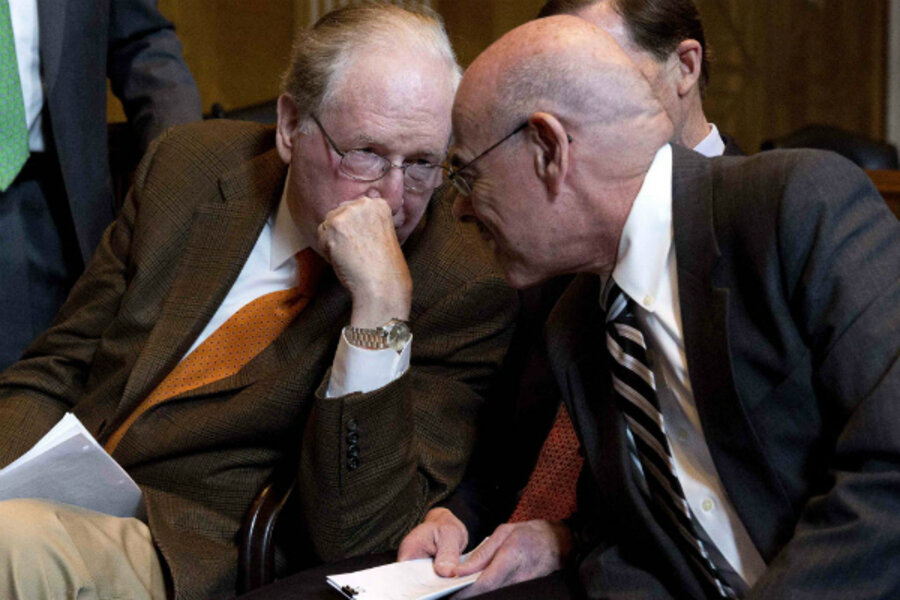Raising Medicare's eligibility age: How much money would it save?
Loading...
How much money could the US government save by raising the eligibility age for Medicare to 67? That’s a key question facing the White House and House Republicans as they try to keep the US from plunging over the so-called “fiscal cliff."
Any deal Washington negotiators might reach is likely to cut big entitlement programs in some fashion. House Speaker John Boehner has proposed raising Medicare’s eligibility age by two years from the current 65. President Obama has not ruled this change out, so at the moment it remains on the table. What would be its fiscal effect?
In isolation, it would substantially reduce government health spending. The Congressional Budget Office in January released a report that looked at increasing Medicare’s age of eligibility by two months per year, beginning in 2014, until it reaches 67. (A phase-in on that schedule would hit that ceiling in 2027, for people born in 1960, in case you’re interested.) By itself, this change would save the government $148 billion from 2012 to 2021, according to the CBO.
Altering the rules of the Medicare road this way would have a permanent effect on the program’s expenditure outlook. By 2035, Medicare’s spending would be about 5 percent lower annually than it otherwise would be. That would be an appropriation equal to about 4.7 percent of gross domestic product, as opposed to a projected 5 percent of GDP under current law.
But you’ll notice that we said “in isolation." That’s because the government can’t change Medicare in such a profound way without producing a spillover effect on other expensive government programs. This reduces the amount of cash the move would actually produce for Uncle Sam.
The CBO estimates that the move would end up cutting off about 5.4 million people. Of these, some would retain private health insurance by working longer. Others would switch to a spouse’s insurance. Some would simply do without.
But those who could would likely switch to Medicaid. After all, Obama’s Affordable Care Act aims to include those who make up to 133 percent of the federal poverty rate in this program for lower-income Americans. Others would buy private insurance through the ACA’s new state exchanges, where they might be eligible for government subsidies, depending on their income.
Both these effects would increase government spending. Roll them into the equation, and increasing the Medicare eligibility age by two years would net a savings of $113 billion over the 2012-to-2021 period, according to the CBO’s numbers.
Some other studies predict that the government’s savings might be somewhat lower. Using different economic assumptions, a 2011 Kaiser Family Foundation study held that immediately raising the Medicare eligibility age to 67 would generate $5.7 billion in net savings to the federal government in the first year of savings.
And Kaiser points out an expensive side effect of the move. As noted above, many 65- and 66-year-olds would stay with private insurance, either by working longer and buying it on the open market. This would shift health-care costs onto their employers, or themselves.
Kaiser figures that employer retiree health-care costs would go up by $4.5 billion annually in an age-67 Medicare regime. Out-of-pocket costs for 65- and 66-year-olds would collectively increase by $3.7 billion a year.
“Given the magnitude of the changes that we estimate would occur by raising the Medicare eligibility age, this analysis underscores the importance of carefully assessing the distributional effects of various Medicare reforms and savings proposals to understand the likely impact on beneficiaries and other stakeholders,” concludes the Kaiser Foundation study.
Still, something must be done, say many Republicans and some Democrats. As the US budget is now structured, entitlement program costs will be huge drivers of future deficits.
“Medicare’s unfunded promises in current dollars reach into the many tens of trillions of dollars,” write the Heritage Foundation’s J.D. Foster and Alison Acosta Fraser in a November study of entitlement reforms.
Social Security is already slowly raising its eligibility age to 67, note Foster and Fraser. Waiting five years, then starting to gradually align Medicare’s and Social Security’s eligibility rules, would bring the government incentives for workers to retire into alignment.
“The long-term savings in Medicare would be profound,” they write.







